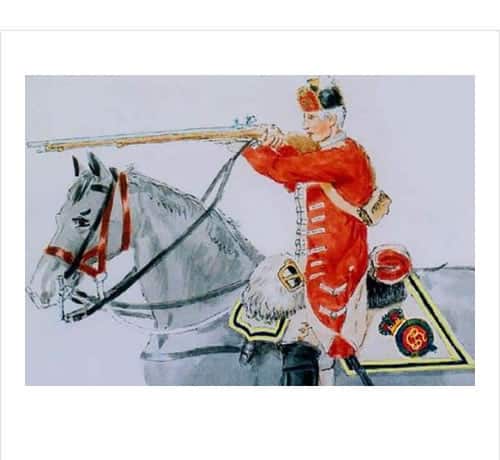Warburg
It was not until the close of the year 1909, just 150 years after the battle, that the cavalry regiments which took part in this brilliant action were authorised to bear on their colours and appointments the battle honour “Warburg”.
The Honour is borne on the Guidon of the 7th Hussars.
Detail
In July 1751, King George II ordered that the Queen’s Own Regiment of Dragoons should bear the number “7” on its appointments as an indication of its seniority, they were also given the right to bear the Queen’s cypher, still used today.
In 1756 The 7th moved back up to Scotland and had a Light Troop added to the establishment, who distinguished themselves in 1758 with raids on St Malo, where they destroyed over one hundred French ships, and at Cherbourg.
In March 1760 the 7th was ordered to Germany to take part in the hostilities there. They joined the Allied Army under Prince Ferdinand of Brunswick. The Commander of the British cavalry was the Marquis of Granby. To prevent du Muy, the French leader, from threatening Cassel, the Allies offered battle five miles from Warburg on the 31st of July 1760.
The 7th Dragoons were in the second line of cavalry and on the right-wing. Soon after the action started du Muy’s left was driven in and the cavalry pressed on towards Warburg forming two columns, the second of which was headed by the 7th Queen’s Own Dragoons. du Muy made gallant and strenuous efforts to retrieve his reverse, but Granby formed his cavalry into two lines and bareheaded, with twenty-one squadrons charged upon du Muy’s right-wing.
Only three French squadrons stood up to the onslaught; the remainder fled. These three squadrons were cut to pieces. The victory was absolute and complete.


